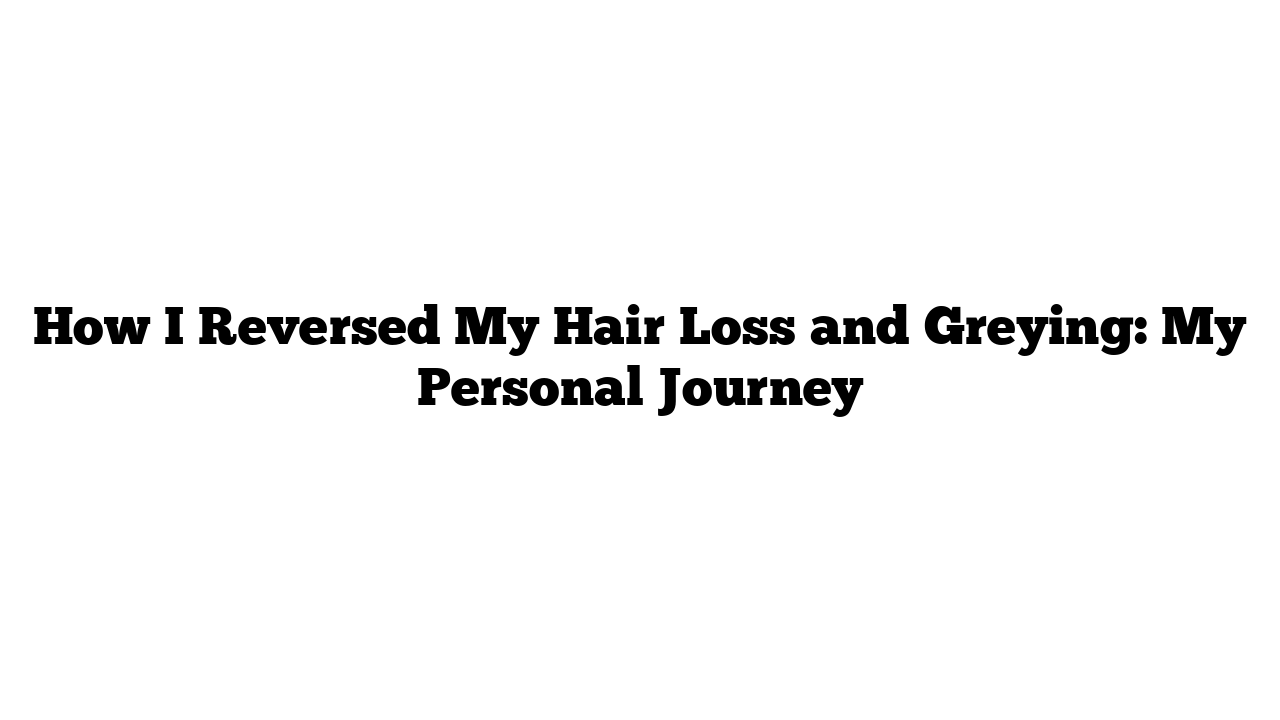As a doctor, I understand the emotional impact of hair loss and greying. Many of my patients share their struggles with these changes, especially when they begin in their 20s or 30s. Personally, I started losing my hair and going gray in my late 20s. Now at 46, I have worked hard to maintain my hair, and I’d like to share my protocol for hair care, along with some tips that have helped me reverse my gray hair.
When to Start Caring for Your Hair
The best time to start caring for your hair is before you notice significant shedding. Many people wait until it’s too late to address hair loss. If you’re in your early to mid-20s, now is the perfect time to start your hair care journey. Remember, it’s easier to prevent hair loss than to reverse it later on.
Daily Protocol for Hair Care
1. Red Light Therapy
Each morning, I wear a red light therapy cap equipped with 32 laser diodes. This cap stimulates blood flow and promotes hair follicle activity. It’s convenient because it’s battery-powered, allowing me to go about my morning routine without sitting still. Studies support the effectiveness of red light therapy, making it a valuable part of my daily regimen.
2. Topical Formulation
Next, I apply a topical formulation to my scalp daily. You may be familiar with minoxidil (often known as Rogaine), which is effective for many. I created a custom formula with additional beneficial ingredients through a local compounding pharmacy. If you’re interested in this approach, I encourage you to consult with a pharmacist to create a tailored solution for your needs. The standard application is once a day, but feel free to use it twice—morning and evening—as preferred.
3. Microneedling
To enhance the benefits of my topical treatments, I incorporate microneedling into my routine. Although I wasn’t consistent with this initially, I believe it plays a positive role in stimulating hair growth. Be cautious, though; doing too much at once can cause trauma to the scalp. Pairing microneedling with topical applications can yield better results, but moderation is key.
4. Basic Care Tips
Basic hair care is essential. Avoid aggressive combing or pulling, as hair follicles are delicate. Simple habits like these can prevent additional stress on your hair and promote better health.
Reversing Gray Hair
I started going gray in my late 20s, which coincided with a particularly stressful period in my life. Over the years, I’ve tried numerous methods to reverse the greying process. Initially, I didn’t see success, but my persistence paid off.
Formulations I Use
Two key formulations have made a difference in my hair’s color:
- GR7 – A product from a UK company that I apply three to four times a week.
- Mayraki – This contains herbal extracts that provide color and is used once or twice a week.
Biopsies of my hair have shown increased production of color, confirming that these formulations are effective. The effort to reverse gray hair is significant, but it is possible!
Getting Started with Hair Care
If you are losing your hair, know that you are not alone. It can be psychologically taxing. For those feeling overwhelmed by all the information, starting with a simple hair formulation like 5% minoxidil is a great first step. This can be easily obtained from various suppliers.
Exploring Advanced Therapies
Once you’re comfortable with the basics, you might consider adding advanced therapies such as red light therapy, PRP (Platelet-Rich Plasma) treatments, or microneedling. Recently, I’ve begun exploring new treatments involving exosomes. We’re using a system called Tixel to open up channels in the scalp and apply exosomes for potential benefits. It will take time to assess the efficacy of this treatment, but I remain optimistic.
Empowering Your Hair Journey
Taking charge of your hair care can feel daunting, but with the right approach, it’s possible to slow down hair loss and even restore some of what has been lost. Each step you take brings you closer to achieving your hair goals. Remember, you’re not alone in this journey.
For more insights on hair care and health, visit medicaltimes.io.
References:
- American Hair Loss Association
- National Institutes of Health: Hair Loss Treatments
- Dermatology Times on Hair Growth Studies
This journey has been challenging, but I hope that by sharing my experience, I can provide some encouragement and actionable advice to help you along your own hair care path.
